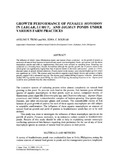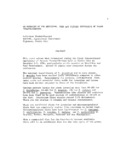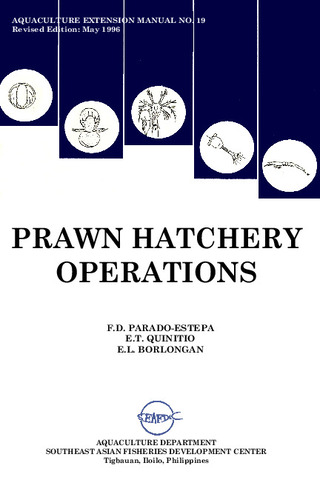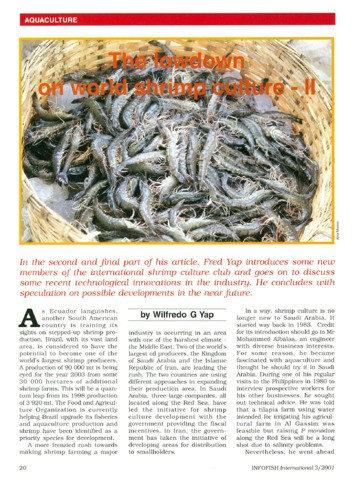Growth performance of Penaeus monodon in lablab, lumut, and digman ponds under various farm practices
Share
អរូបី
The influence of lablab, lumut (filamentous algae), and digmaan (Najas graminea) on the growth of prawns as associates of natural food biomass in brackishwater ponds was investigated. Ponds, each grown with the above macrophytes species and with no supplementary feed used, were selected as sampling areas. Sampling was conducted on a biweekly basis. Results showed that although the specific growth rate of prawns reared in the lablab pond was significantly higher than that of prawns reared in the lumut and digman ponds (p<0.01), absolute values in growth showed otherwise. Prawns reared in the digman pond attained highest growth which was significant (p<0.01). The digman pond was able to support a much higher density and produce a higher growth, coupled with a substantial survival. The digman pond yielded 606 kg of prawns, while the lablab pond yielded 569.5 kg and the lumut pond 305 kg. At value of $ 10 per kg, the rearing of prawns in the digman pond would be more profitable than the other treatments.
Suggested Citation
Triño, A. T., & Bolivar, M. E. C. (1990). Growth performance of Penaeus monodon in lablab, lumut, and digman ponds under various farm practices. Journal of Aquaculture in the Tropics , 5(2), 123-129. http://hdl.handle.net/10862/1324
ប្រធានបទ
Taxonomic term
បណ្តុំបណ្តុំ
- AQD Journal Articles [1249]
Related items
Showing items related by title, author, creator and subject.
-
An overview of the nutrition, feed and feeding techniques of prawn penaeid/shrimps
Piedad-Pascual, Felicitas (Philippine Council for Aquatic and Marine Research and Development, 1989)This paper echoes what transpired during the first International Conference of Penaeid Prawns/Shrimps held in Iloilo City in December 4-7, 1984, particularly on the Nutrition nd Feed Development. Around 25 papers were ... -
Prawn hatchery operations
Parado-Estepa, Fe D.; Quinitio, Emilia T.; Borlongan, Emeterio L. (Aquaculture Department, Southeast Asian Fisheries Development Center, 1996-05)The manual, an updated version of the 1984 SEAFDEC/AQD manual, presents the underlying principles and step-by-step instructions of prawn larval and post-larval rearing. The techniques described are not only applicable to ... -
The lowdown on world shrimp culture - II
Yap, Wilfredo G. (INFOFISH, 2001)This paper introduces some new members of the international shrimp culture club and goes on to discuss some recent technological innovations in the industry, particularly the polyculture of tilapia (mainly Oreochromis ...




